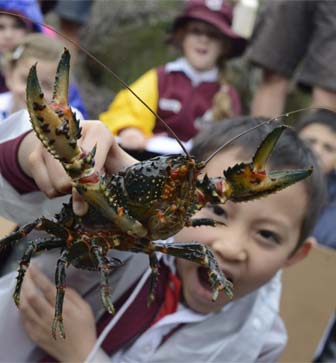Stage 1 excursions
Auseco’s field trips for primary students offer a unique opportunity for experiential learning, under the care of our engaging and experienced Field Guides.

Homes and habitats
How many legs do you have – only two? In the natural world, we’ll find creatures that have four, six, eight, or even ten legs. We’ll also learn about the habitats these creatures live, why they choose them for a home, and why it’s important for us to look after these special places.
Syllabus outcomes for these field trips
Science & Technology: Living World
ST1-1WS-S A student observes, questions and collects data to communicate and compare ideas
ST1-4LW-S A student describes observable features of living things and their environments
Geography: Features of places and How places are organised
GE1-1 A student describes features of places and the connections people have with places
GE1-2 A student identifies ways in which people interact with and care for places
Bushland habitats
Would you like a home among the gum trees? All kinds of surprising creatures call the bush their home, and we’re going to get to know some of them! We’ll make friends with a tree, search for little animals in the bush and in a freshwater creek, and learn about what they need in their habitats so they can live and grow.
Locations
- Camp Kedron (Ingleside)
- Camp Coutts (Waterfall)
Program outline
- Morning session: Welcome, habitat review, caring for special places, meet a tree
- Midday session: Leaf shake, land animal catch, useful plants
- Afternoon session: Water animal catch, creature encounter, sensory reflection
This is a very flexible program. The timing and location of activities will vary according to factors such as the students’ interests, the school’s schedule, and the environmental conditions on the day.
Teacher notes for this program are available by request. Please use the button below.
Rainforest habitats
Beneath the rainforest canopy is a damp, shady world inhabited by palm trees, ferns and twisting vines. It’s a special place of wonder and beauty for us to enjoy alongside the animals that love to live here. We’ll find out how the rainforest meets the needs of a variety of different creatures, and how we can look after their precious habitat.
Location
- Mt Keira (Wollongong)
Program outline
- Morning session: Welcome, habitat review, caring for special places
- Midday session: Hug a Tree activity, rainforest animal catch and creature encounter
- Afternoon session: Homes and habitats activity, sensory reflection
This is a very flexible program. The timing and location of activities will vary according to factors such as the students’ interests, the school’s schedule, and the environmental conditions on the day.
Teacher notes for this program are available by request. Please use the button below.
Seashore habitats
People love to visit the seashore, and there’s so much to do! We’ll see people surfing, fishing and walking their dogs on the beach. But our activities sometimes upset the animals that live here too. We’ll get to know some of these seashore inhabitants and how they manage to live and grow at the seaside, despite the humans all around.
Locations
- Fisherman’s Beach (Collaroy)
- Narrabeen rock platform
Program outline
- Morning session: Welcome, habitat review, human activities, meet a seaweed
- Midday session: Marine animal catch and creature encounter
- Afternoon session: Sand sculpture activity, My Treasure activity
This is a very flexible program. The timing and location of activities will vary according to factors such as the students’ interests, the school’s schedule, and the environmental conditions on the day.
Teacher notes for this program are available by request. Please use the button below.
Wetland habitats
The mangroves and sand dunes of Botany Bay are rich and varied habitats for creatures who like being wet and muddy – does this include you? We’ll stomp into the mangrove forest where crabs live in holes and the trees have snorkel roots, and you never know what we might find!
Location
- Botany Bay (Kurnell)
Program outline
- Morning session: Welcome, habitats review, mangrove tree discovery
- Midday session: Leaf shake and sand dune animal catch
- Afternoon session: Mangrove/mudflat animal catch and creature encounter, sand sculpture activity
This is a very flexible program. The timing and location of activities will vary according to factors such as the students’ interests, the school’s schedule, and the environmental conditions on the day.
Teacher notes for this program are available by request. Please use the button below.
